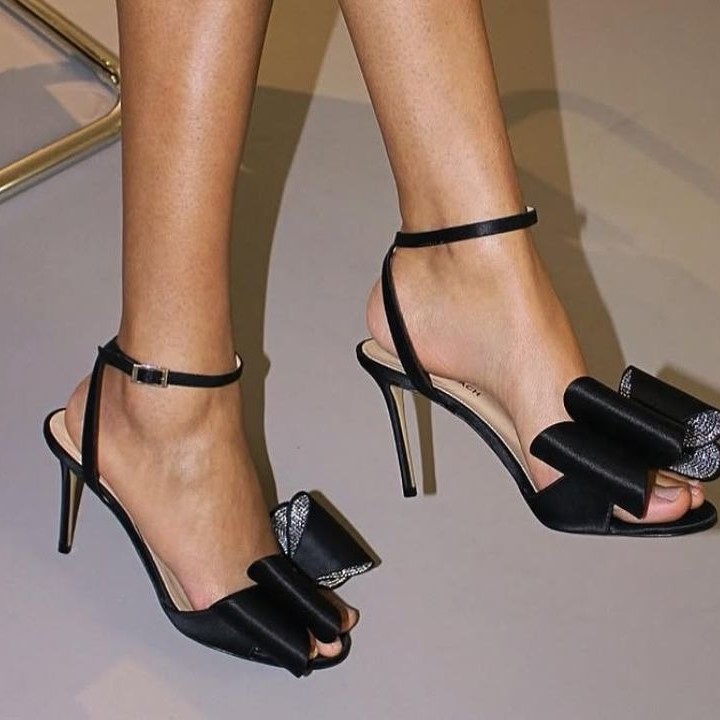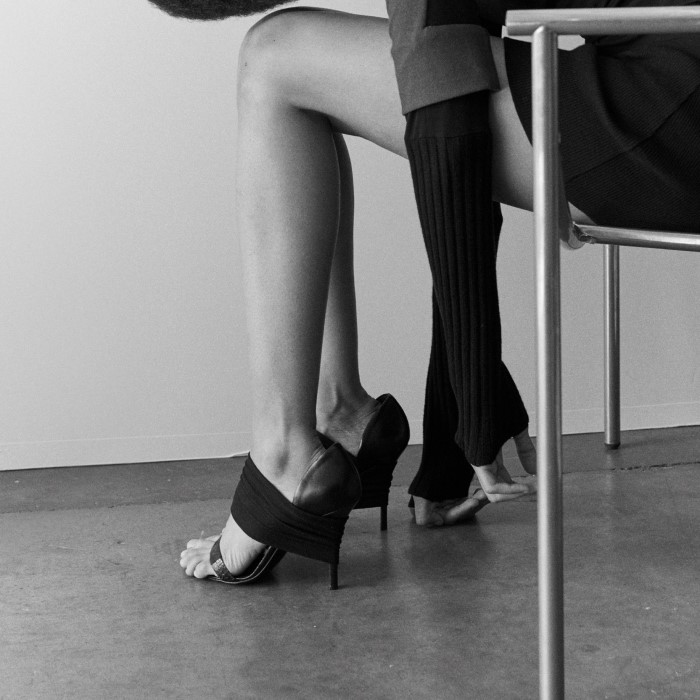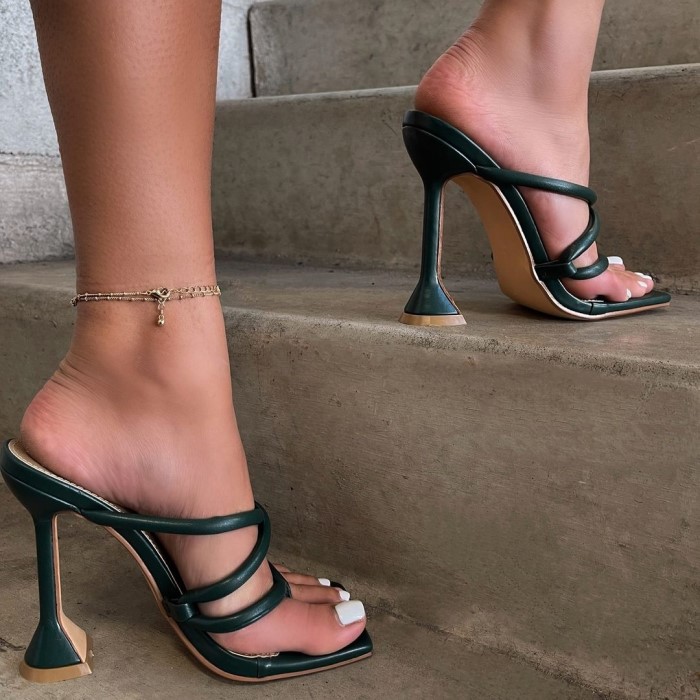Introduction to Walking in Heels
Walking in heels can feel like a daunting challenge for many, especially for those who are new to the experience. Understanding how to walk in heels not only enhances your appearance but also boosts your confidence. This article aims to provide comprehensive guidance on mastering the art of walking gracefully in high heels. By incorporating proven techniques and tips, you will learn how to wear your heels comfortably and stylishly.
Benefits of Walking in Heels
Walking in heels offers many benefits beyond style. It can boost your confidence, improve your posture, and add elegance to your overall look. Understanding these benefits can motivate you to master the art of walking in heels.

Enhancing confidence and posture
Walking in heels encourages you to stand tall. They naturally make you lift your shoulders and straighten your back. This upright posture can create a sense of authority and poise. Over time, walking in heels builds confidence as you navigate different environments with grace. You feel empowered, which positively affects how you carry yourself.
Adding elegance to your look
Heels bring a touch of sophistication to any outfit. They elongate your legs and enhance your silhouette. Whether paired with formal attire or casual wear, heels elevate your appearance. You look refined and polished without trying too hard. Choosing the right pair ensures that elegance stays effortless and timeless every step of the way.
Choosing the Right Pair of Heels
Selecting the perfect pair of heels is essential for style and comfort. A carefully chosen pair can make walking in heels more enjoyable and reduce discomfort.
Factors to consider for comfort and fit
Comfort and fit are the top priorities for walking in heels. Ensure the shoes fit snugly but do not pinch your toes or heels. Try them on in-store or verify your size if buying online. Check the padding; soft insoles can prevent foot pain. Prioritize heels that provide stability, such as wider heels or platforms. Adjustable straps can also help with a better fit and security.
Understanding different types of heels
Different heel styles suit various needs and preferences. Stilettos give a sleek look but require experience and balance. Block heels are easier to walk on and offer better stability. Wedges distribute weight evenly, making them ideal for beginners. Kitten heels are a stylish choice for shorter heel heights. Understanding these types allows you to select according to your walking skills and comfort goals.

Materials and features for beginners
Material plays a crucial role in comfort. Leather or suede heels often stretch and adapt to your feet. Avoid hard or stiff materials as they may cause blisters. For beginners, look for heels with cushioned insoles and rubber soles for better grip. Low heel heights, under 2 inches, are easier to handle. Additional features like ankle straps or non-slip soles can provide added support and balance during walks.
Preparing Your Feet for Heels
Preparing your feet is essential to walk in heels comfortably. Strong and supported feet can help you avoid pain and injury. Simple steps can make your experience with heels much better.
Foot exercises to build strength
Strengthening your feet is the first step to handle heels. Do exercises regularly to boost flexibility and stability. Stretch your ankles to improve movement. Toe curls and foot rolls can strengthen the muscles. Calf raises help build muscle in your lower legs, supporting better posture. These exercises make walking in heels easier and reduce strain on your feet.
Using inserts or cushions for comfort
Inserts and cushions provide extra comfort when wearing heels. Choose those made for high heels to offer ample support. Gel inserts reduce pressure and cushion your steps. Ball-of-foot pads can soothe high-pressure areas. Silicone cushions can improve fit and prevent slipping. Adding these simple items to your heels ensures better comfort for prolonged wear.
Techniques for Walking Gracefully in Heels
Walking gracefully in heels is a skill that requires proper technique and practice. By mastering key strategies, you can navigate various environments confidently and elegantly.
Perfecting your posture
Good posture is essential for walking gracefully in heels. Stand tall with your shoulders back and chest lifted. Keep your chin level and eyes focused forward. Distribute your weight evenly to prevent wobbling. Engage your core muscles for extra stability. Maintaining correct posture helps with balance and reduces strain on your back.

Mastering the heel-to-toe walk
The heel-to-toe technique ensures smooth, natural steps in heels. Start by placing your heel down first. Roll forward onto the ball and then the toes. Avoid putting your entire foot flat at once. Take smaller steps to keep balance and prevent stumbling. Practice walking in straight lines to gain better precision and ease.
Balancing tips for different surfaces
Walking on uneven surfaces can be tricky in heels. For carpets, lift your feet slightly higher. On slippery floors, step gently and at a steady pace. Use textured soles to improve grip on smooth surfaces. Avoid walking fast on cobblestones; instead, take deliberate, slow steps. Adjust your stride to match the surface for maximum control and stability.
Beginner-Friendly Heels to Start With
Choosing beginner-friendly heels can make your first steps in heels much easier. Start with comfortable options to build confidence and skill. The right shoes make walking in heels a pleasant experience.
Recommended heel heights for beginners
For beginners, lower heel heights are the best choice. Go for heels under 2 inches. They provide style without sacrificing stability. Kitten heels are a great option, offering a refined look with manageable height. Wedges also work well, as they distribute weight evenly and reduce pressure. Avoid stilettos, which require advanced balance and practice.
Consider block heels. They offer excellent support and are easier to walk in. Prioritize comfort over style in the beginning. Gradually increase heel height as you gain experience and confidence.
Best designs for easy walking
Certain designs are ideal for beginners. Look for heels with ankle straps for added support. Adjustable straps secure your feet and prevent slipping. Mary Janes are another great option, combining style with stability. Chunky heels provide more grip and balance compared to thinner heels.
Opt for shoes with cushioned insoles. Soft padding reduces foot pain and allows longer wear. Rubber soles improve grip, especially on slippery surfaces. Ensure the material is flexible and molds to your feet, like leather or suede. These features help you practice walking in heels without discomfort or fear of falling.
Breaking in New Heels
Breaking in new heels can prevent discomfort and help you walk smoothly. By taking the right steps, you can make your heels feel comfortable and minimize foot pain.
Tips to make new heels comfortable
Wear them at home:
Dedicate some time to wearing your new heels indoors, starting with short durations, such as 10 to 15 minutes.
Gradually increase the time as your feet get accustomed to the shoes. This practice allows you to assess how the heels feel in a comfortable and controlled environment.
Monitor any pressure points or discomfort you experience to address them before wearing them outside.

Use thick socks:
When trying on your heels at home, consider pairing them with thick socks.
This method helps to gently stretch the material of the shoe, particularly in areas that may feel tight or restrictive.
Thick socks not only provide a softer barrier between your feet and the shoe but also help in loosening the fit without damaging the shoe’s structure.
Apply heat for tight spots:
If you notice specific areas of the heel that feel particularly tight, you can apply controlled heat.
Use a hairdryer to warm the tight areas of the shoe for a few seconds; make sure to keep it at a safe distance to avoid damaging the material.
After applying heat, wear the heels while they cool down. As the shoes cool, they will mold to the shape of your feet, creating a more comfortable fit.
Use shoe stretchers:
Consider investing in adjustable shoe stretchers, designed to expand the shoe in specific areas where it may be too snug.
These tools can be particularly effective for addressing problem spots like the toe box or the sides of the shoe.
By leaving the stretchers in the shoes overnight or for a few days, you can achieve a customized fit that significantly improves comfort.
Break them in gradually:
When you first acquire a new pair of heels, resist the urge to wear them for long periods right away.
Instead, start by wearing them for short intervals, gradually increasing the duration over several days or weeks.
This gradual process helps your feet adapt to the new shoes while reducing the risk of blisters or soreness.
Opt for protective pads:
Consider using protective pads, such as cushioned inserts, gel pads, or heel grips, to enhance comfort.
These additional layers help to alleviate pressure on sensitive areas of your feet and can significantly improve the overall wearing experience.
Be sure to choose pads that are designed to fit your specific shoe type, ensuring they stay securely in place while you walk.
Avoiding blisters and foot pain
- Moisturize your feet: Keep your feet soft using a good moisturizer. This reduces friction and prevents blisters.
- Use anti-blister products: Apply blister sticks or powders to common friction points like the toe and heel areas.
- Tape toes for high heels: Tape your third and fourth toes together. This reduces pressure on your foot muscles.
- Mitigate tightness: Stretch shoes using special sprays designed for leather or fabric shoes.
- Carry backup shoes: For long events, bring a pair of flats as a backup.
- Listen to your feet: Remove your heels if you feel pain. Give your feet time to relax and recover.
Breaking in heels and taking precautions ensures a more comfortable walking experience while avoiding injuries and pain.
Common Mistakes to Avoid
Walking in heels is an art that takes practice and preparation. Avoiding common mistakes can make your experience more enjoyable and successful.
Overstepping the comfort zone
Trying to walk in very high heels before you’re ready can lead to injuries. Start with low, manageable heels to build confidence and skill. Avoid wearing heels for long hours if you’re not accustomed to them. This can cause pain and fatigue. Don’t attempt challenging surfaces, like cobblestones, without proper practice first. Stick to flat, stable ground until you feel more balanced. Rushing into stilettos or tall heels can set you up for falls and discomfort.
Neglecting posture and balance
Poor posture can make walking in heels feel unstable and awkward. Always stand tall with your shoulders back and core engaged. Avoid leaning forward or looking down at your feet. This disrupts balance and increases strain on your legs. Skipping balance practice can also lead to stumbles. Walk slowly and gracefully, taking small steps. Practicing good posture and balance ensures you move confidently and safely in heels.
Caring for Your Heels and Feet
Taking care of your heels and feet ensures pain-free and stylish walking. Proper maintenance and recovery steps can help prolong both shoe and foot health.
Maintenance tips for your shoes
- Clean them regularly: Wipe dirt and stains immediately to keep heels looking new.
- Protect the material: Use specific sprays for leather, suede, or fabric shoes to prevent damage.
- Check the soles and heels: Replace worn-out parts, such as damaged heel tips or loose soles, promptly.
- Store them properly: Keep heels in a cool, dry place to maintain shape and finish.
- Use shoe trees: Shoe trees help maintain the structure of your heels while avoiding creases.
- Avoid harsh surfaces: Walk on smoother surfaces to reduce wear and tear on your heels.
Skincare and recovery for your feet
- Moisturize daily: Apply lotion to keep your skin soft and prevent cracks.
- Soak tired feet: Use warm water with Epsom salts after extended wear to relax foot muscles.
- Massage feet: Enhance circulation and relieve tension with simple foot rubs or massagers.
- Trim nails properly: Keep toenails short to prevent discomfort or pressure while wearing heels.
- Use antifungal products: Prevent or treat foot fungus with powders or creams.
- Rest your feet: Alternate heel-wearing days to allow recovery and reduce strain overall.
Proper care for your heels and feet keeps you walking confidently and comfortably everywhere.
Conclusion: Step Out with Confidence
Ultimately, learning how to walk in heels is a skill that can be mastered with practice, determination, and the right knowledge. By choosing comfortable shoes, practicing your technique, and working on your balance, you can walk confidently in heels. Embrace the learning journey and step out with confidence! Remember, walking in heels is not just about the physical act; it’s about how you carry yourself. So, wear them unapologetically and enjoy every step you take!
